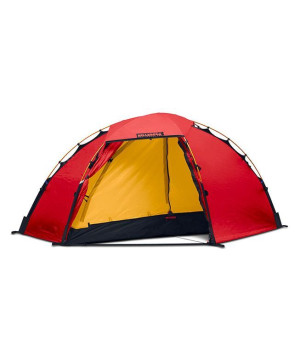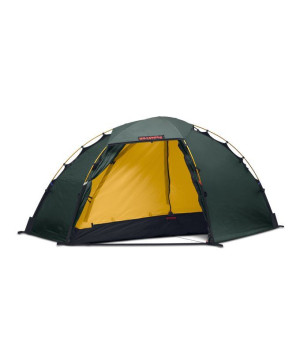A tent for trekking or backpacking?
Forbidden
You don't have permission to access this resource.
At OutdoorXL you will find a wide range of trekking tents and backpacking tents focused on low weight, solid weather protection and a compact pack size. This category is about practical tents that carry well and pitch quickly, without unnecessary extras.
Weight is a key factor. Ultralight designs cut grams with minimalist pole structures and thinner fabrics, while more robust models add a little weight for extra durability and comfort. Look at trail weight and packed weight, and consider how that translates to your daily distance and terrain.
Season rating matters. Most trekking tents and backpacking tents are 3-season, balancing ventilation with rain and wind protection from spring to autumn. For exposed routes or shoulder seasons, sturdier pole architecture and lower-cut flysheets increase stability. In winter or high alpine conditions, a 4-season build prioritizes strength over airflow.
Space and livability affect rest and organization. Capacity labels (1-person, 2-person, etc.) indicate sleeping room, but vestibule size, interior height and door placement make a big difference. Generous vestibules protect packs and boots. Tapered floors and vertical sidewalls improve usable space without a weight penalty.
Materials define performance and lifespan. Canopies and flysheets commonly use nylon or polyester with silicone or PU coatings for waterproofing. Lower denier fabrics save weight; higher denier fabrics boost abrasion resistance. Aluminum poles are the standard for strength-to-weight, while advanced composites appear on some premium models.
Pitching style influences where you can camp. Freestanding or semi-freestanding tents are easier on rocky or hard ground, while non-freestanding designs need solid staking but often weigh less. Some shelters use trekking poles instead of dedicated tent poles to reduce pack weight for those already carrying poles.
Ventilation helps manage condensation. Double-wall tents separate inner mesh from the fly to encourage airflow, and adjustable vents fine-tune moisture control. Look for features like two doors for cross-breezes and the option to pitch the fly first in wet weather to keep the inner dry.
Packability is more than a number. A compact stuff sack fits more easily in or on the pack, and modular packing lets partners split poles, fly and inner. A compatible footprint protects the floor on abrasive ground and can extend the tent’s lifespan.
Details make use simpler in the field. Color-coded poles and clips speed setup. Reflective guy lines stand out at night. Durable zippers and reinforced stress points add reliability when weather turns.
Choosing the right model comes down to route length, expected weather, campsite type and the weight you are comfortable carrying. Use the selection of trekking tents and backpacking tents at OutdoorXL to compare weight, season rating, interior space and setup style. The result is a tent that packs small, pitches cleanly and shelters well when it counts.

 Europe - English (EUR)
Europe - English (EUR)  The Netherlands - Nederlands (EUR)
The Netherlands - Nederlands (EUR)  Belgie - Vlaams (EUR)
Belgie - Vlaams (EUR)  Denmark - Dansk (DKK)
Denmark - Dansk (DKK)  Germany - Deutsch (EUR)
Germany - Deutsch (EUR)  England - English (GBP)
England - English (GBP)  France - Français (EUR)
France - Français (EUR)  Italy - Italiano (EUR)
Italy - Italiano (EUR)  Spanje - Español (EUR)
Spanje - Español (EUR)  Poland - Polski (PLN)
Poland - Polski (PLN)  Austria - Deutsch (EUR)
Austria - Deutsch (EUR)  Zweden - Svenska (SEK)
Zweden - Svenska (SEK)  Swiss - Deutsch (CHF)
Swiss - Deutsch (CHF)  Canada - English (CAD)
Canada - English (CAD)  United States - English (USD)
United States - English (USD)  Middle East North Africa - Arabic (USD)
Middle East North Africa - Arabic (USD)  International - English (USD)
International - English (USD) 













































































































































































































































































































